The Cathedral Belfry: Centerpiece of Rostov’s great kremlin
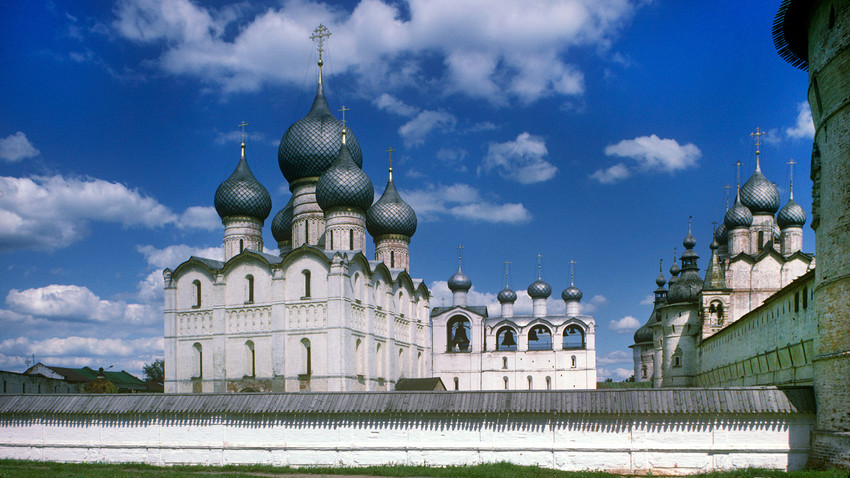
Rostov kremlin, west wall. From Left: Dormition Cathedral, belfry, north wall with towers & Church of Resurrection over North Gate. West view. June 28, 1995.
William BrumfieldAt the beginning of the 20th century, the Russian chemist and photographer Sergei Prokudin-Gorsky developed a complex process for color photography (see box text below). Inspired to use this new method to record the diversity of the Russian Empire, he undertook numerous journeys across the country between 1903 and 1916.
Prokudin-Gorsky’s vision of photography as a form of education and enlightenment was demonstrated with special clarity in his photographs of medieval architecture in settlements such as Rostov Veliky (the Great), which he visited in 1911. My own work in Rostov covers a period from 1987 to 2012
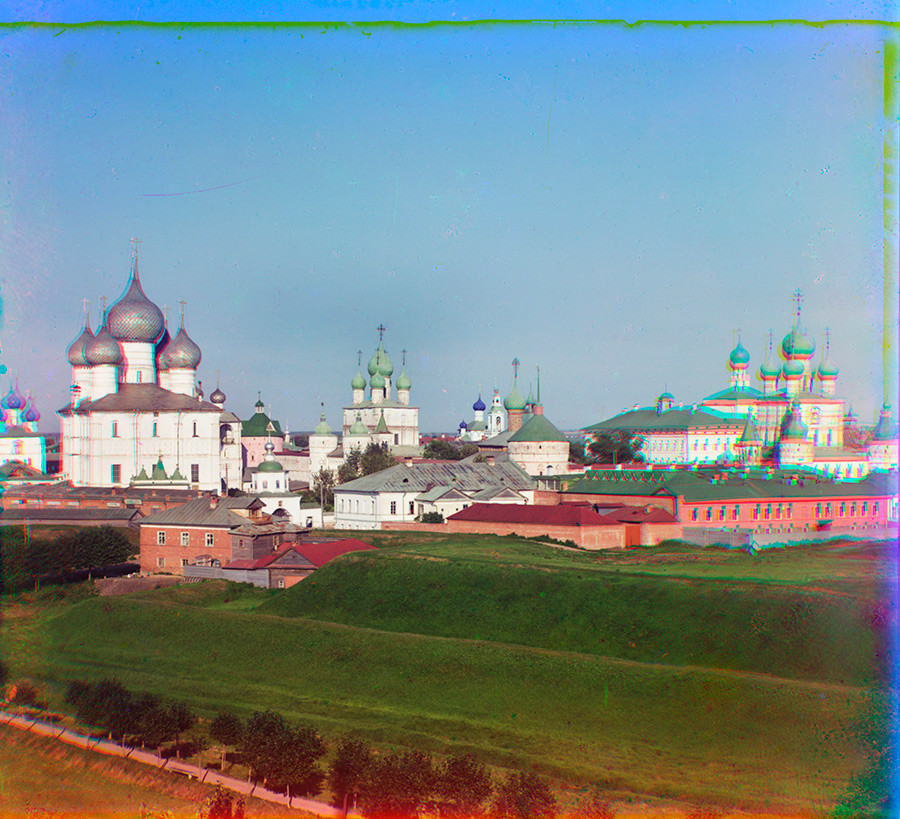
Rostov Kremlin. Northwest view from bell tower of All Saints Church (destroyed). From left: Dormition Cathedral, Church of Resurrection over North Gate, Church of St. John over West Gate. Summer 1911.
Sergei Prokudin-GorskyThe Metropolitan’s vision
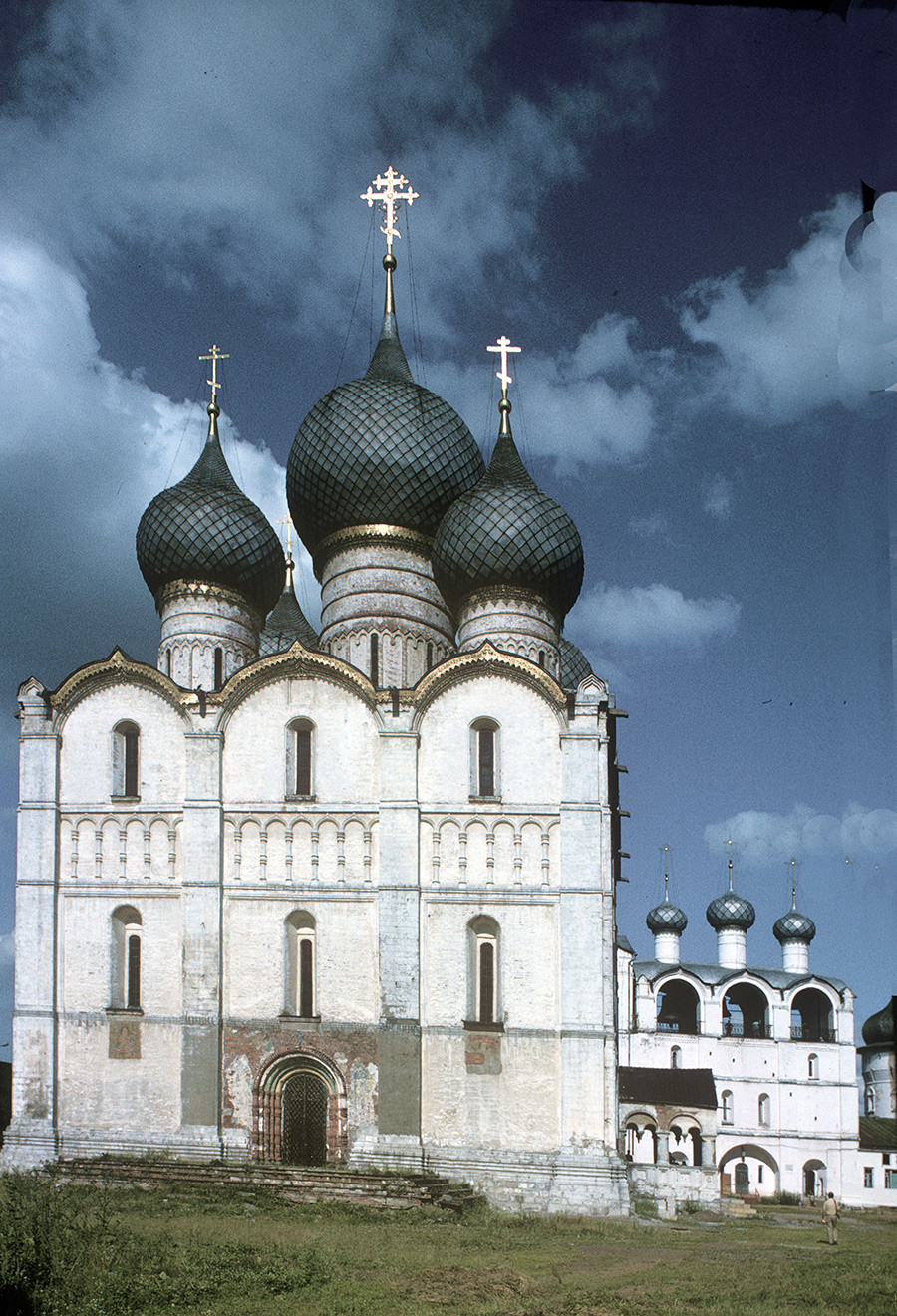
Dormition Cathedral&belfry. West view. June 28, 1995.
William Brumfield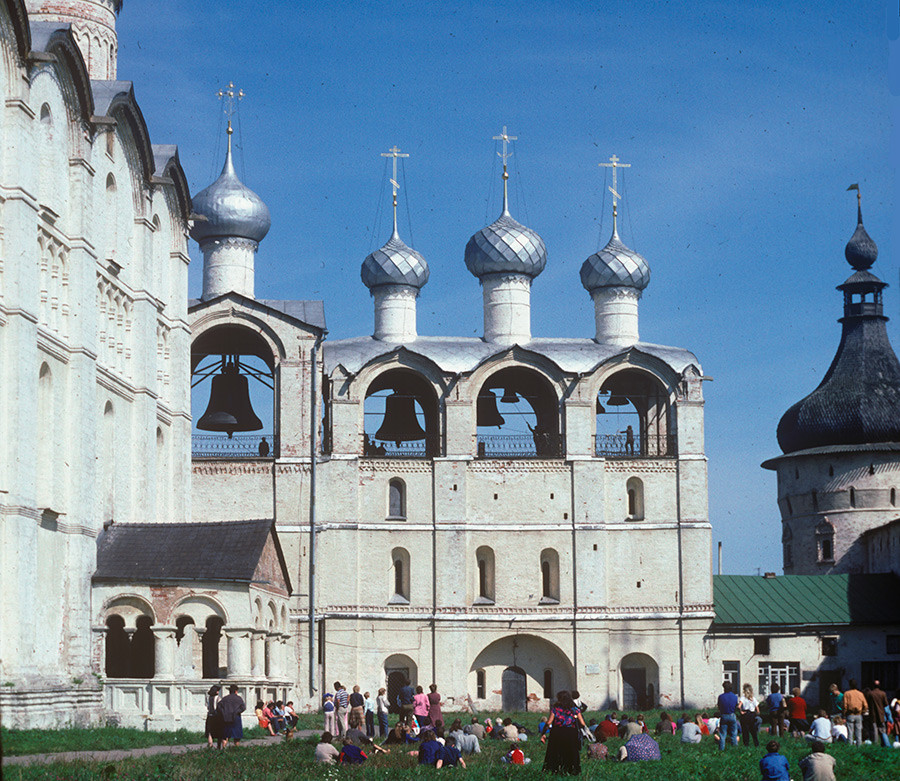
Dormition Cathedral (south facade)&belfry. West view. August 21, 1988.
William Brumfield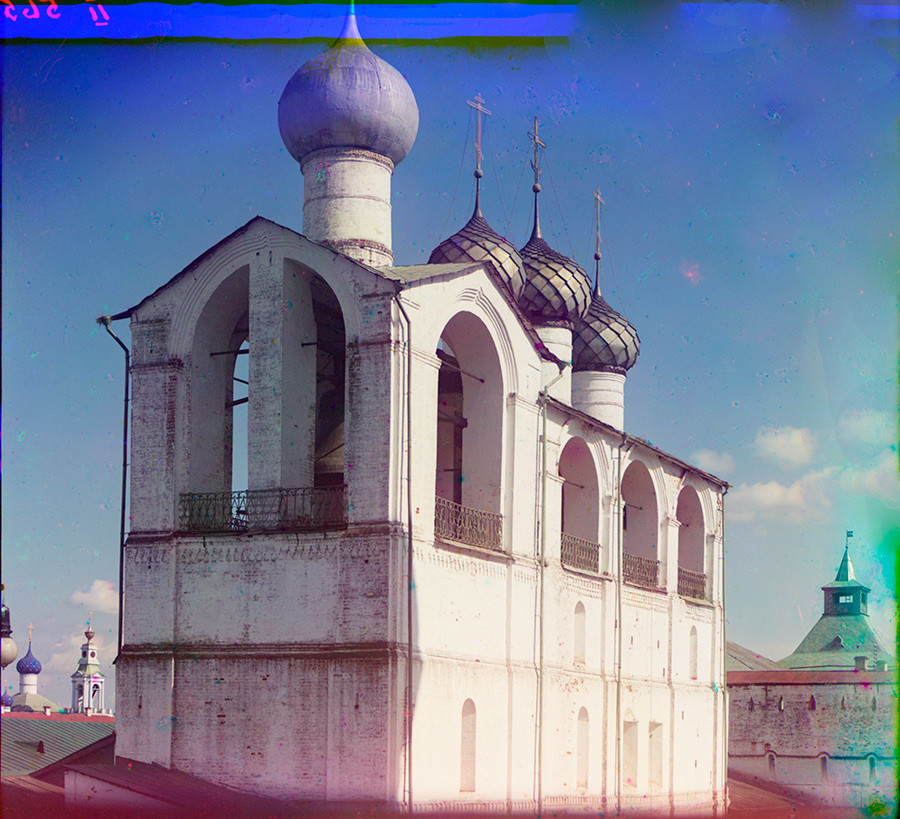
Cathedral belfry, upper tiers. Northwest view. Summer 1911.
Sergei Prokudin-Gorsky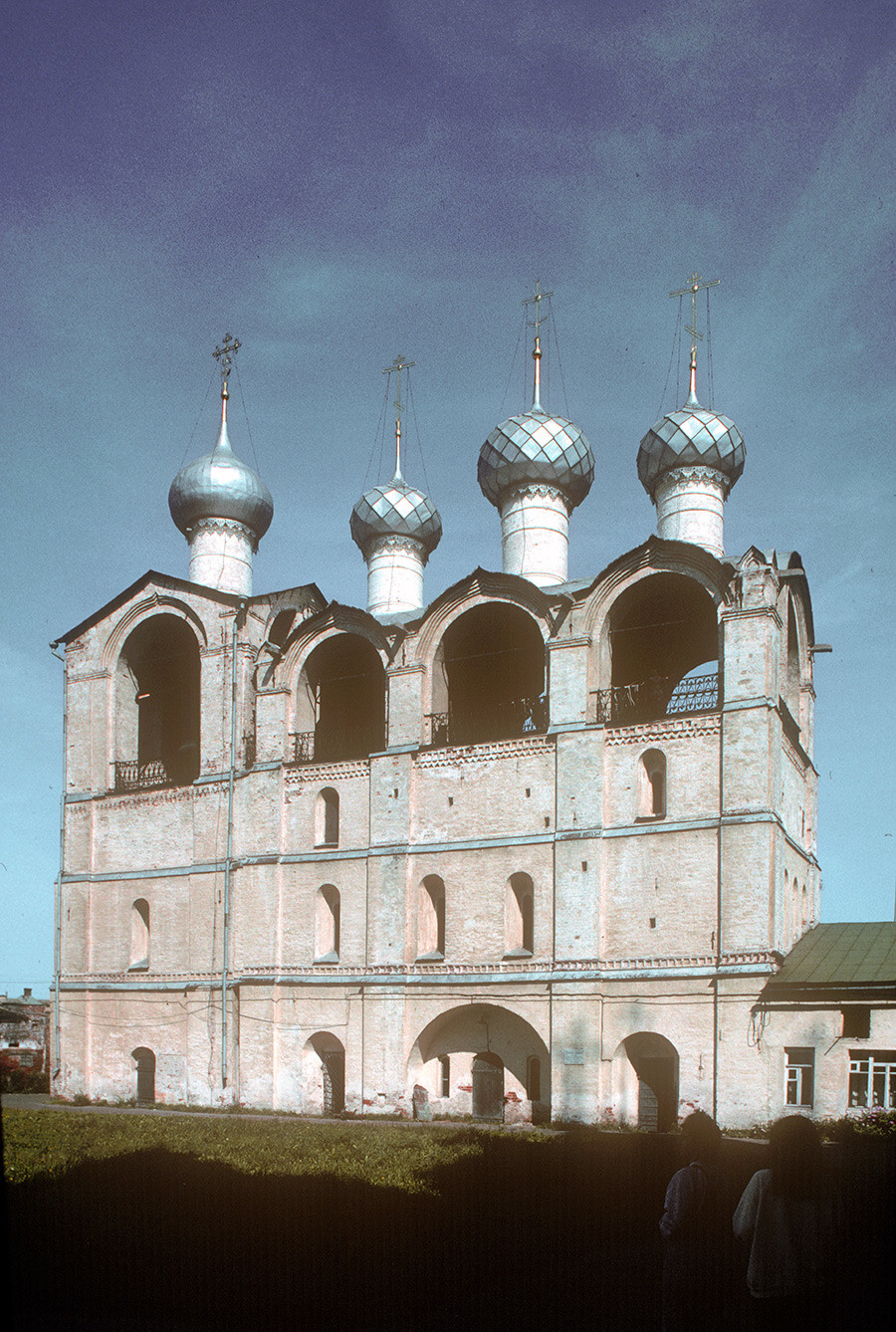
Cathedral belfry. Southwest view. August 21, 1988.
William BrumfieldJonah had at his command 16,000 serfs as well as the best craftsmen of his large and prosperous diocese. Within 20 years — from 1670 to 1690 — Jonah's masons erected not only several large churches and buildings for the Metropolitan's Court and
The adjacent 16th-century Dormition Cathedral, built of brick and modeled after the Dormition Cathedral in the Moscow Kremlin, provided a fitting environment for the metropolitan's compound, to which it is visually linked by the belfry. Although usually dated to 1508-12, the cathedral is thought to have been enhanced in the late 1580s when the Rostov Metropolitanate was established. In the late 17th century, the low hemispherical cupolas were replaced by the magnificent flaring onion domes that match the style of the crowns of Jonah’s new churches, such as the nearby Church of the Resurrection over the North Gate
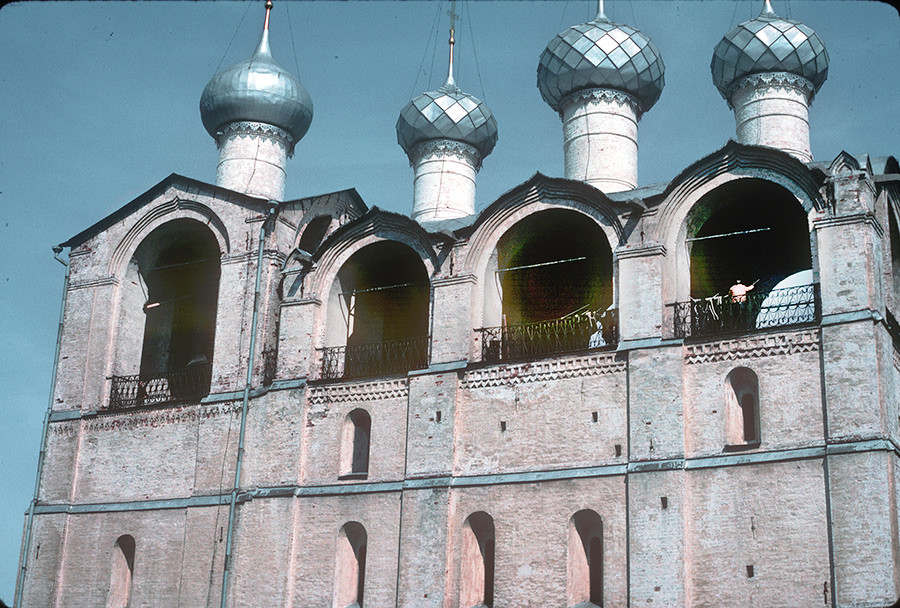
Cathedral belfry, upper tiers with bell ringers. August 21, 1988.
William BrumfieldA home for a 'swan'
The great belfry (
One of the two largest bells, cast in 1682 by the Moscow master Philipp Andreev and his son Gabriel, was named “Swan” (because of its melodious trumpet sound), and the other, “Polyeleos” (an Orthodox liturgical reference derived from the Greek for “most merciful”). “Polyeleos” weighed some 18 tons and was pitched to E, while “Swan” weighed 9 tons and was pitched to G.
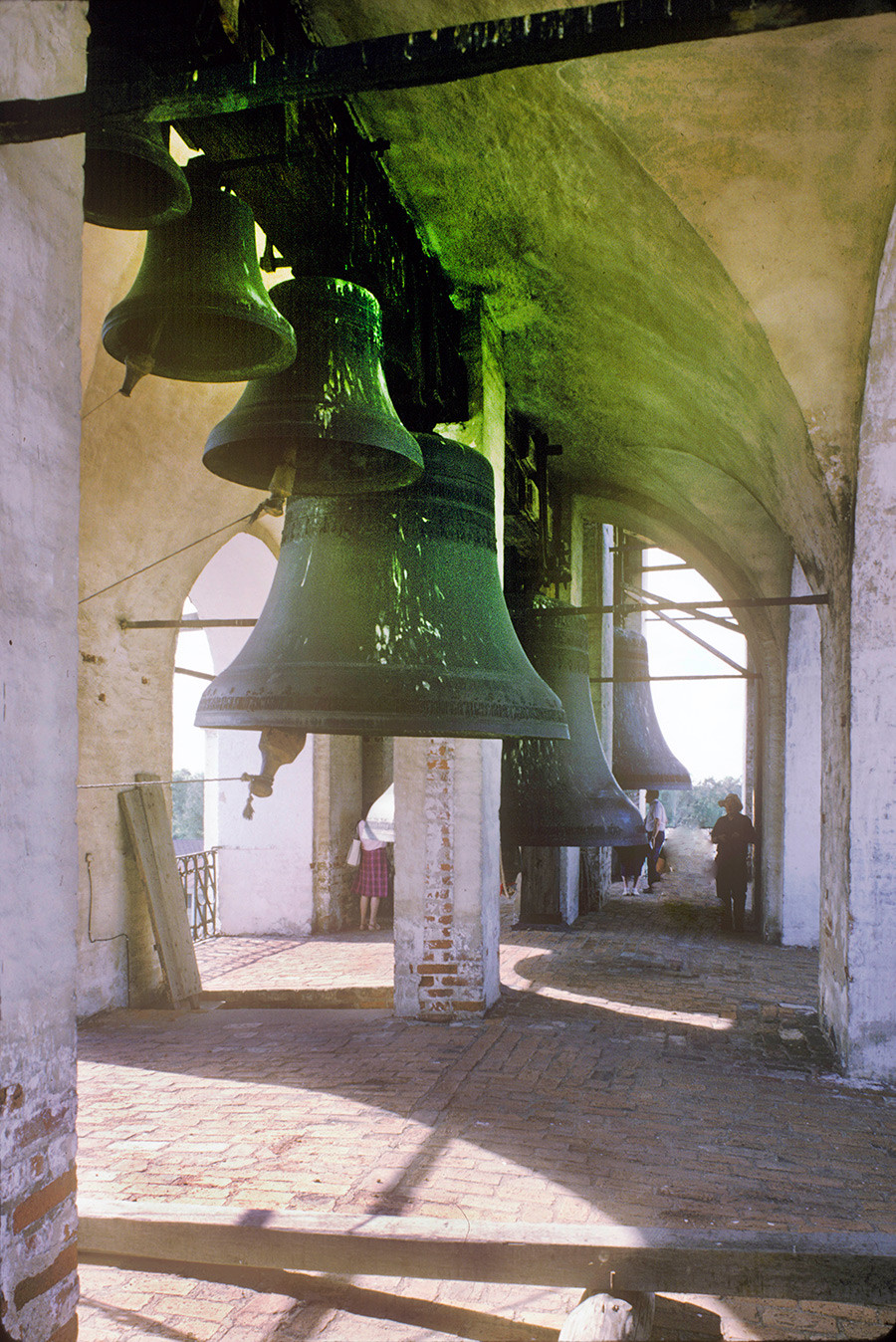
Cathedral belfry, upper tier with "Swan," "Polyeleos" and "Sysoi" bells. June 28, 1995.
William BrumfieldTogether with the smaller bells, they rang in a minor key that apparently did not suit Metropolitan Jonah. He entrusted another master, Flor Terentyev from the Moscow Cannon Works, with the task of modifying the bell set to create a major key.
Terentyev resolved the challenge in 1688 by pouring an even larger bell, named “Sysoi” after the Metropolitan’s father. Weighing some 36 tons and tuned to C, the bell had a tongue that weighed 100 poods (about 3,600 pounds) with a swing of 1.4 seconds. Together the three largest bells formed a C-major chord. It is thought that the casting of the largest bells occurred in a pit to the south of the Dormition Cathedral, although the question has not been conclusively resolved.
To house the massive “Sysoi,” a slightly taller structure was attached to the north of the belfry. The resulting four open segments of the two belfry components were harmoniously linked in their proportions for
Bells under threat
Yet even as Jonah’s grandiose project reached its culmination, developments were underway that would undermine the wealth of the Rostov Metropolitanate and threaten the very existence of the Metropolitan’s belfry. By the turn of the 18th century, the young Tsar Peter I, determined to transform Russia into a competitive European state, had requisitioned much monastic property and commanded the widespread melting of bells as a ready source of metal, especially for armaments.
Fortunately, the cathedral belfry was spared, but staggering sums were taken from the Metropolitanate for Peter’s state treasury during the 1690s, and the Rostov Metropolitanate rapidly waned in importance during the 18th century. Only the energetic efforts of local merchants in the late 19th century — and the subsequent patronage of Nicholas II — saved the Rostov
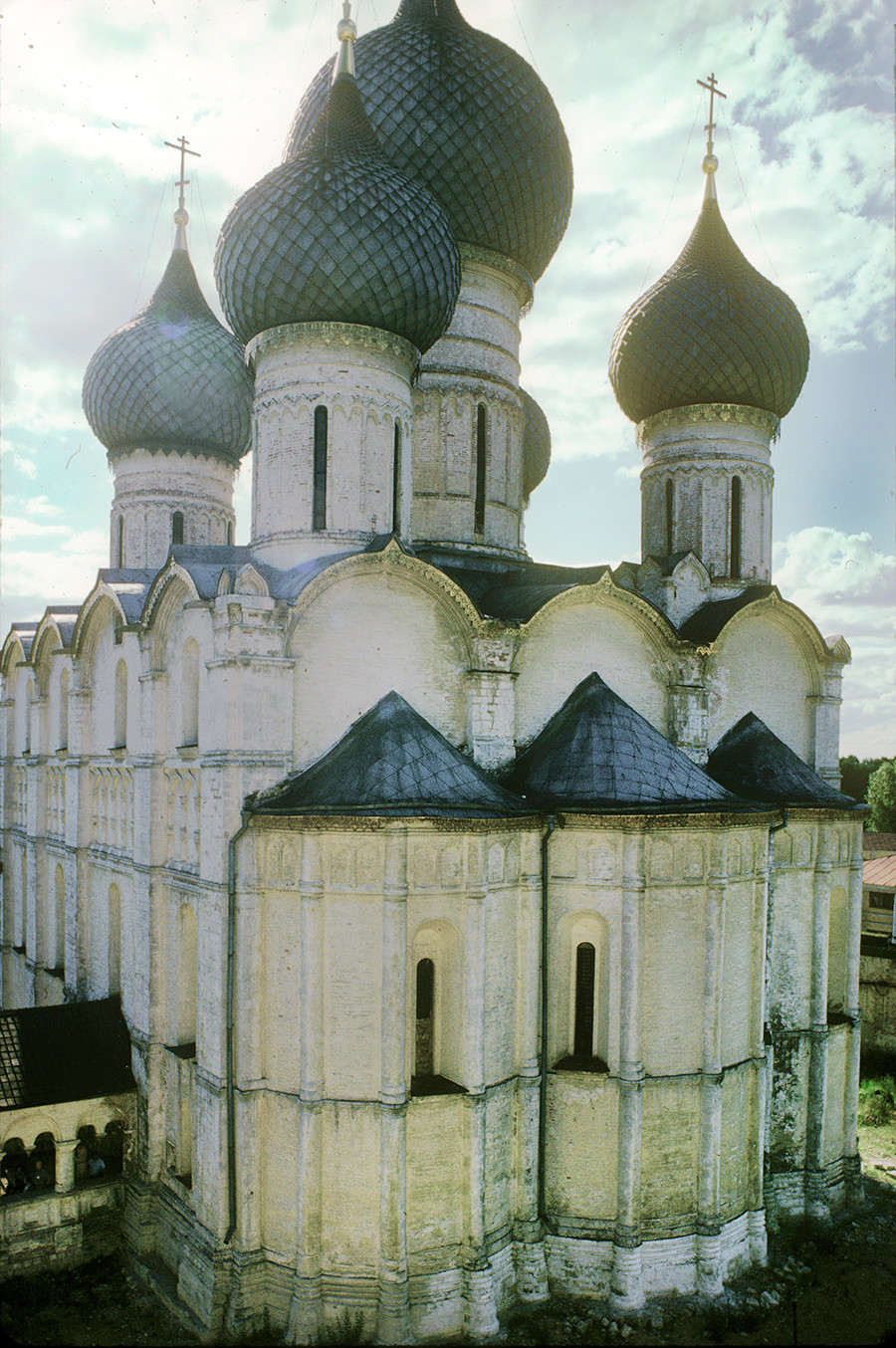
Dormition Cathedral. Southeast view from belfry. June 28, 1995.
William BrumfieldBy 1928, bell ringing at the site was forbidden, and in 1930 the cathedral was closed. In August 1953, a devastating storm wreaked havoc, destroying most of the cupolas and roofs of the
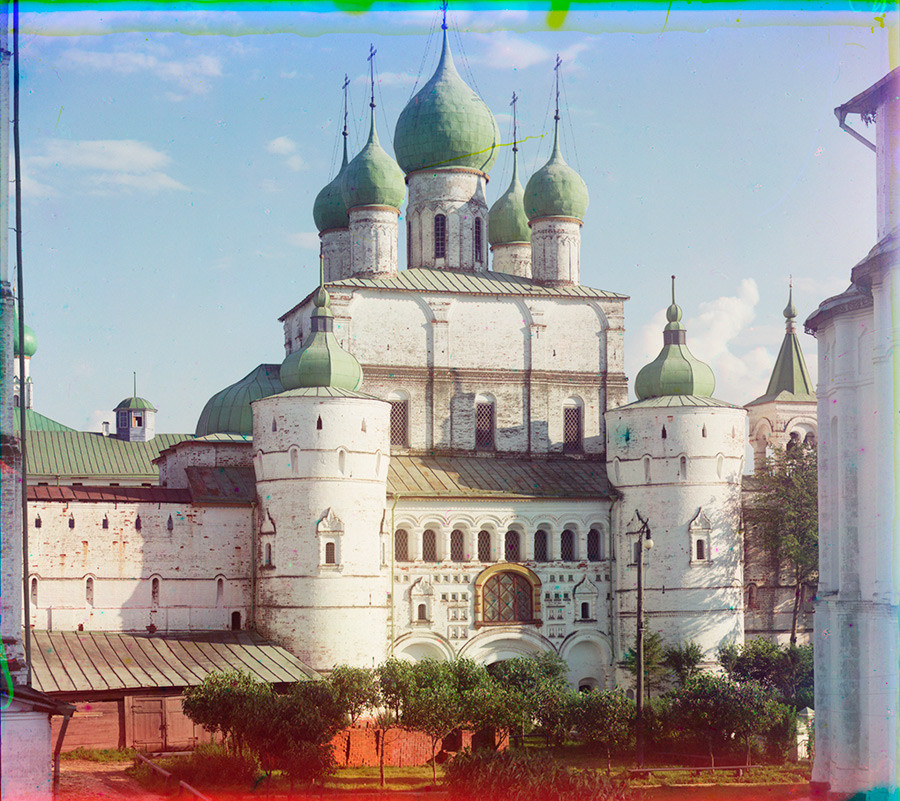
Church of Resurrection over North Gate. North view. Right: apse of Dormition Cathedral. Summer 1911.
Sergei Prokudin-GorskyIn 1991, the Dormition Cathedral was returned to the Orthodox Church, and the painstaking process of reviving the interior began. In 2004 restoration work began on the small Church of the Entry into Jerusalem in the belfry. The Rostov State Museum and the Orthodox Church continue to coexist in the ensemble.
In 2013, the Rostov kremlin was chosen one of the 10 visual symbols of Russia through a national public vote organized by the State Broadcasting Company. Despite the turbulence that might have destroyed the belfry, the bells are now rung periodically and can justifiably be considered one of the defining aural symbols of Russia
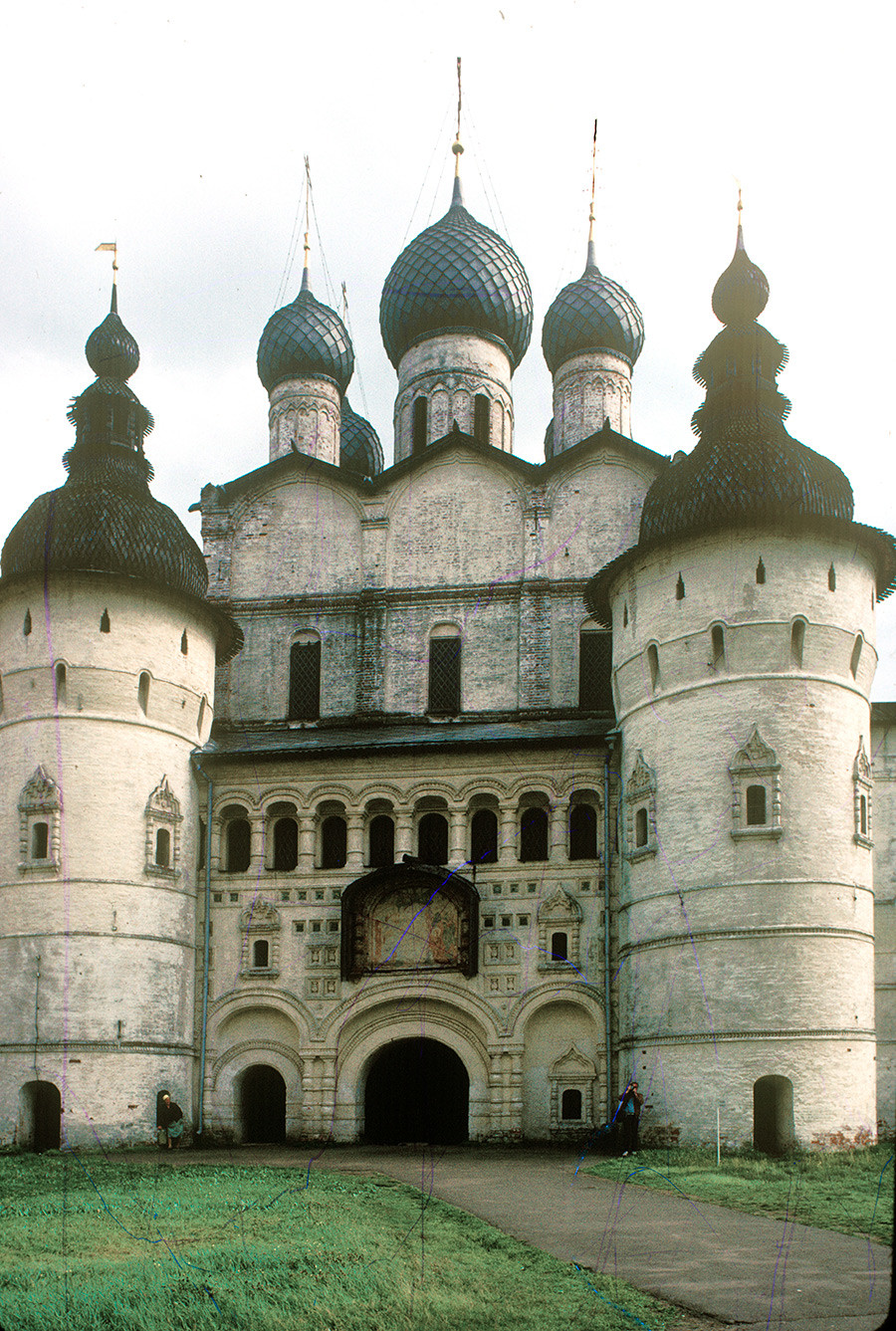
Church of Resurrection over North Gate. North view. August 7, 1987.
William BrumfieldIf using any of Russia Beyond's content, partly or in full, always provide an active hyperlink to the original material.
Subscribe
to our newsletter!
Get the week's best stories straight to your inbox